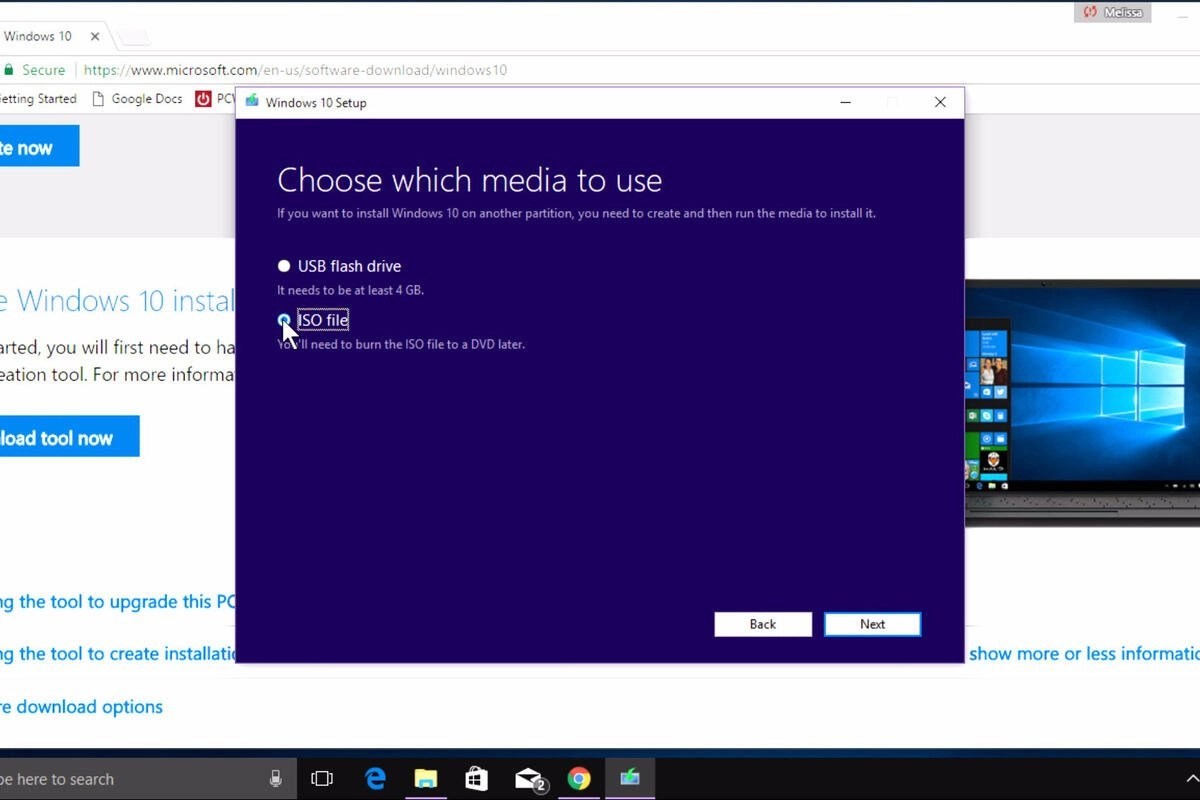How To Easily Download Windows 10 ISO
In this article, we explain how to download Windows 10 ISO file without the Media Creation Tool. Click to read full guide.
Author:Daniel BarrettJun 10, 202211649 Shares219789 Views

Microsoft makes Windows 10 ISO images available to everyone through its download website, but if you’re already using a Windows machine, it forces you to download the Media Creation Tool first. Here’s how to download Windows ISOs without the creation tool.
Microsoft’s Media Creation Tool is only for Windows. If you access the website from another operating systemlike macOS or Linux, you will be sent to a page where you can directly download an ISO file instead. You’ll need to make your web browser pretend you’re using another operating system to get those direct ISO file downloads on Windows. This requires spoofing your browser’s user agent.
The browser’s user agent is a short string of text that tells a website which OS and browser you’re using. If something on the website isn’t compatible with your setup, the site can provide a different page. If you spoof the user agent, you will be able to access a site that claims it’s incompatible with your system. Your browser will claim it’s on a non-Windows operating system to get to the direct ISO file downloads.
Whether you presently use Windows 10 and want the latest version or want to switch from another operating system, it’s possible. But there may be some confusing steps. Downloading and installing the Windows 10 ISO file allows you to install the latest Microsoft OS.
We cover the basics if you don’t know how to download and install a Windows 10 ISO file. Follow the steps outlined below.
Step 1: Download The Windows 10 ISO Legally From Microsoft On Windows.
Head to the Windows 10 download page and click the blue “Download Tool Now” button. If you’re on a computer running Windows 7, 8, or 10, use the Windows 10 Download Tool. If not, move to step 2 below.
This tool makes it easy to turn any USB key into a bootable Windows 10 installer and allows you to download the Windows 10 ISO file for future use. When the tool downloads, run it. Then confirm whether you want to upgrade your current PCor create installation media for another PC.
Select “Create Installation Media For Another PC,” as shown above, and click “Next.” Next, select the language, architecture, and edition of Windows you prefer. It’s usually best to check the box for Use This Recommended Option For This PC, but you can also customize and choose a different Windows edition, such as Windows 10 Pro or Home.
Next, if you want to install Windows on your PC, select the “ISO File” Option. This will save a file that you can click later (step 3) to upgrade your PC to Windows 10. If you wish, you can also use the ISO to burn Windows 10 to a DVD. In that case, go ahead to step 4.
Otherwise, if you want to create a USB Flash Drive, select the “USB Flash Drive” option. It will allow you to create a bootable USB drive that you can use to erase everything from your computer and go for a “clean install.” This USB drive can be used on other computers to install Windows. Choose your USB drive and download Windows 10 to it with this option.
Note: Everything on the drive will delete before installation, so make sure no important files become lost.
For most people, the ISO file is the safest method. When you Select ISO File, click Next, and select where to save the ISO file. Once the download is complete, you will have the ISO file on your computer’s hard drive. After that, you can continue to step 3 for more.
Step 2 (optional): Downloading The Windows 10 ISO From Microsoft On Mac, Linux, And Windows
The Windows 10 Download Tool only works on computers running Windows 7, 8, or 10. However, if you’re not running one of those operating systems, you can still download the Windows 10 ISO from Microsoft. Just head to the Windows 10 download page, and it will detect that you’re not running a compatible OS.
From this page, you can pick which version of Windows 10 to download, either 32-bit or 64-bit ISO, in your language of choice. You can then copy the ISO file to a USB stick and bring it over to a Windows laptop or desktop to proceed with the installation.
Step 3: Install Windows 10 Directly From The ISO From Within Windows 7 or 8/8.1
If you’re running Windows 8 or newer, you can upgrade your PC or laptop to Windows 10 by mounting the ISO file you just downloaded by double-clicking it. Windows will display the ISO as though it is a DVD drive.
Then you can install Windows 10. Just open Setup.exe, and the installer will open. From here, you can choose to install Windows 10 in place, leaving your files and programs. All necessary data will transfer from the ISO to your computer, which will eventually restart your PC to complete the installation.
If you’re running Windows 7 or earlier, you can’t mount ISOs. Instead, you can download “Virtual Clone Drive” and use that to install ISO files. As soon as you’ve mounted it, the installation will work the same as outlined above. You also can try the Windows 10 Upgrade Assistant to upgrade from Windows 10.
Step 4: Burn The Windows 10 ISO To A DVD
If your computer has a DVD burner and you’ve got a writable DVD on hand, you can burn the Windows 10 ISO to a DVD and install Windows 10 by booting from it. To do this, right-click the ISO file, then click “Burn Disc” Image. The Windows Disc Image Burner will open, asking you which drive you’d like to use.
When ready, click “Burn” to start the process. When it’s complete, you’ll have a bootable DVD that you can use to install Windows. Of course, you can use other software to burn your ISO, but the built-in software is simple.
Most computers should boot from DVD by default, but sometimes you may need to access your computer’s boot menu to install Windows 10 from DVD. Annoyingly, this requires a different keyboard shortcut on other devices. Still, if you pay attention when your computer starts up, see the instructions for accessing the boot menu.
Other Uses For The Windows 10 ISO File
There are plenty of other uses for a Windows 10 ISO file. For example, you may want to install Windows 10 on your Mac or set up Windows 10 in a virtual machine application. In either case, the ISO file is the preferred tool for installing Windows 10.
You will need a valid Windows 10 product key to install Windows 10. This isn’t a problem on computers currently running Windows 7 or Windows 8/8.1. You can upgrade in place, and Windows 10 will detect your previous license. Failing that, you can use the product key on your device to look for a sticker.
The free ISO file isn’t a free Windows license. It just helps to install Windows 10 more conveniently. Mac users, custom PC builders, and anyone installing on a virtual machine will need a product key to install Windows 10 legally. Then, they can buy Windows 10 Home for $139.
That’s all to it! Let us know your thoughts in the comments.
Editor’s picks:

Daniel Barrett
Author
Latest Articles
Popular Articles